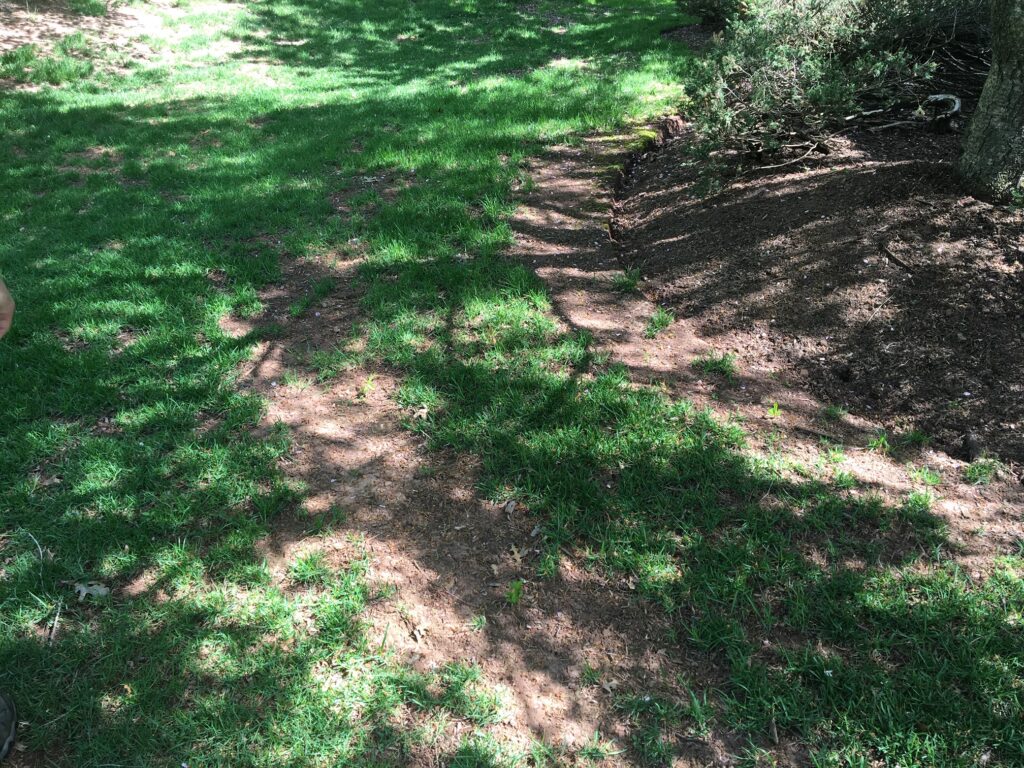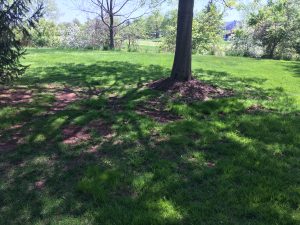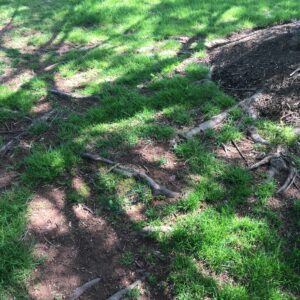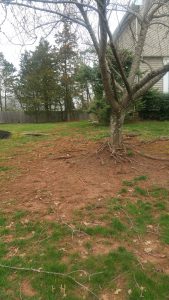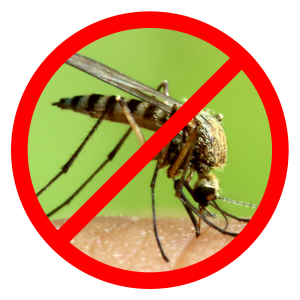Property Aging, Soil Compaction and Erosion
It is believed that 35 million years ago the Colorado River flowed over what was then nothing more than a vast plain. However, after hundreds of millennia the river carved a giant trench into the earth’s surface more than 5000 feet deep and 277 miles long. This great trench we now call The Grand Canyon was shaped by two of the most powerful forces known to man; erosion and time. Over time, use and forces of Nature shape all land areas including the lawn and landscape.
It’s Just Common Sense
That bit in the opening about the Grand Canyon was something we probably all learned in grade school and haven’t thought much about erosion since then. Just because we haven’t thought about erosion in the last decade or so doesn’t make it any less true. We haven’t thought about the periodic table in just as long, but the elements still exist. Erosion is every bit as real as copper, gold, and silver, and no surface on this earth is immune to its influence.
Aging on the other hand is something we can all appreciate. As time passes, everything from our cars to our cell phones, to our own bodies start to wear out. Our properties are not any different. In fact, if you think about it, it’s remarkable that they last as long as they do. Cars have garages, cell phones have cases, and we have clothes and homes. What does the property have to shield itself from the elements? Now you may not live on the same parcel of land for as many millennia as it takes to see a canyon form, but it is reasonable to understand that wear and tear happens, even to our properties.
Soil Compaction
The quality of the soil and the long-term health of the lawn go hand in hand. In central New Jersey there is predominantly clay soil, so one of the main concerns is soil compaction. Clay soil holds water and remains soft for extended periods following irrigation or rain fall. While in this state the soil can easily compress, especially within the top inch or two. Over time, the soil becomes compacted and it makes it very difficult for oxygen and water to reach the root zone where it is needed. If soil compaction goes unaddressed for too long, plants suffer due to lack of oxygen. As a result, the grass cannot recover from even moderate stress, and eventually ground cover is lost as plants slowly die off.
Soil compaction becomes an issue more quickly in areas that receive higher amounts of traffic. Areas in and around children’s swing sets, near gates, portions of the lawn near the perimeters of beds where mowers make turns, areas in front of entrance/exit to decks or porches, corners of driveway/walkway that are cut across on foot, are all areas where soil compaction stress is accelerated. The grass recovery cannot outpace the stress that occurs, and these areas thin out more quickly than open sections of the property that receive less traffic.
Trees
We have established that lack of oxygen in the soil can lead to the decline in grass health as a result of soil compaction and that the clay soil has a tendency to hold moisture. In open areas the direct sunlight evaporates moisture from the soil surface. This allows oxygen to enter microscopic pore spaces between the soil’s particles so that the roots can “breathe”. The health of the grass depends on this influx of oxygen between irrigation and rainfall.
Without being able to take in the oxygen, the grass suffocates and under-performs. Within the shade of tree canopies, the moisture remains inside the micro-pores of the soil for too long, and the roots don’t receive enough oxygen. The clay soil also remains softer for longer, which accelerates compaction. As time passes, trees become larger and more mature, their canopies shade more surface area, and the amount of lawn affected becomes more extensive.
The lack of direct sunlight also interferes with the ability of the grass to photosynthesize. Plants use the sunlight, carbon dioxide and water to produce carbohydrates in order to live. The sunlight filtered through the leaves of the trees is not enough to support the grass beneath, and so it suffers.
Moreover, the tree roots also compete with the grass for beneficial soil nutrients. As the trees mature, their nutrient requirements increase, and their roots reach further across the property to support the demand. As a result, the same tree can impact a much larger area than it had previously.
Erosion
A lot of people may forget that the relationship between the soil and the grass is symbiotic. Most everyone understands that the grass depends on the soil as a medium in which to set its roots and grow. The soil’s ability to hold moisture and nutrients is essential for the plants. However, the soil also relies on the plant roots to give it stability as well as absorb excess moisture. Without established ground cover, soil becomes very unstable and as rainfall or irrigation occurs, the soil washes away a little at a time.
Properties are designed to shed water away from buildings, so there is always water movement over the soil surface following rain or irrigation. We do our best with landscaping to minimize the effects of erosion, but over time this process can take a significant toll on the property. In wetter regions such as ours that receive higher amounts of annual rainfall, the effects of erosion can be very substantial from one year to the next.
What to do
To minimize the negative effects of soil compaction, the lawn should be core aerated at least every other fall. This process of removing plugs from the soil and allowing them to resettle alleviates the compacted clay. As a result, the grass plants receive ample oxygen to support dense, healthy root growth. The fibrous root growth in turn helps maintain the integrity of the soil structure and discourage soil loss from erosion.
What better way to reverse the aging process than bringing in new life! Seed whenever necessary to re-establish ground cover. Do not allow thin areas to become bare areas and incorporate higher quality newer turf blends whenever possible. Newer grass varieties have better resistance to drought stress and disease which will provide more durable long-lasting ground cover.
Also, work with a landscaper to minimize erosion by directing water shed through areas least vulnerable to soil loss. For example, you can run downspouts into underground drainpipes or into gravel areas so that water doesn’t flow over the soil surface or settle in low points of the lawn. As trees mature and roots become exposed install more durable ground cover to keep it from getting worse. Any combination of mulch, stone, and low-lying shrubs can be used to create long-lasting, functional, and attractive features to the landscape that will prevent erosion.
Irrigate the lawn deeply and infrequently to promote root growth. Most lawns with clay soil should be watered heavily every fourth day. Frequent watering can cause disease and shallow rooting if done lightly and can promote erosion and serious oxygen deprivation when done heavily. Irrigation cycles should be spread out to allow the moisture enough time to move deeply into the soil. Depending on the weather and how well your property drains, irrigation may only need to be run once every 7-10 days.
Additionally, we recommend promoting dense turf growth through fertilization. Keeping the grass well fed will give it the capability to recover from stress. Without vigorous turf growth, stress from traffic, disease, drought, and insects can cause significantly more permanent damage and loss of ground-cover.
Conclusion
Despite your best efforts, at times deterioration can occur. Most of the time this isn’t because you’re doing anything particularly wrong, or your landscaper doesn’t know what they’re doing. These things happen because your lawn is exposed to a myriad of different types of stress in an ever-evolving environment, and sometimes it just can’t keep up even with your help. The best that you can do is institute sound cultural practices and accept that like any other living thing, the lawn will require additional care as it ages.
If you are in our service area and would like more advice about your lawn and landscape, request a free estimate online, or give our office a call at 908-281-7888.



